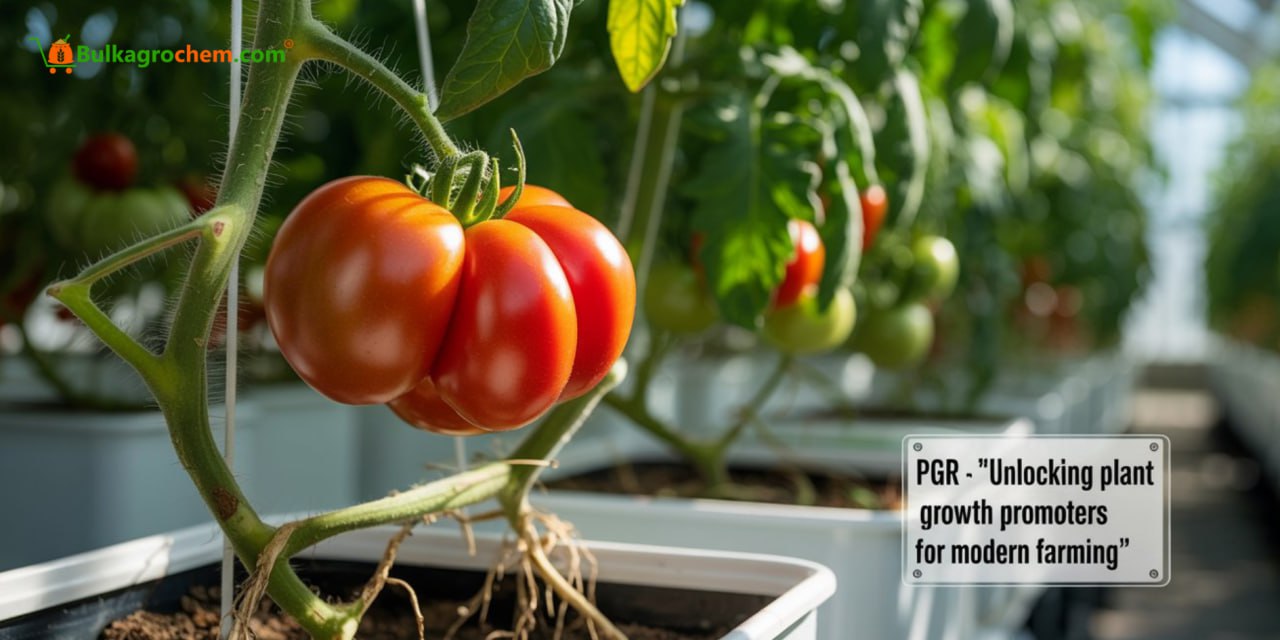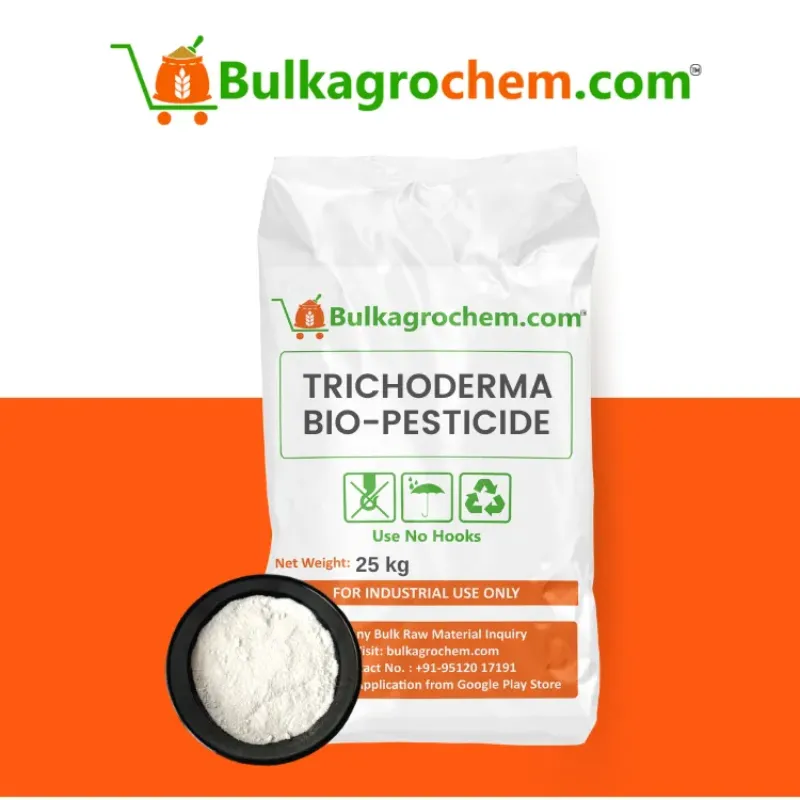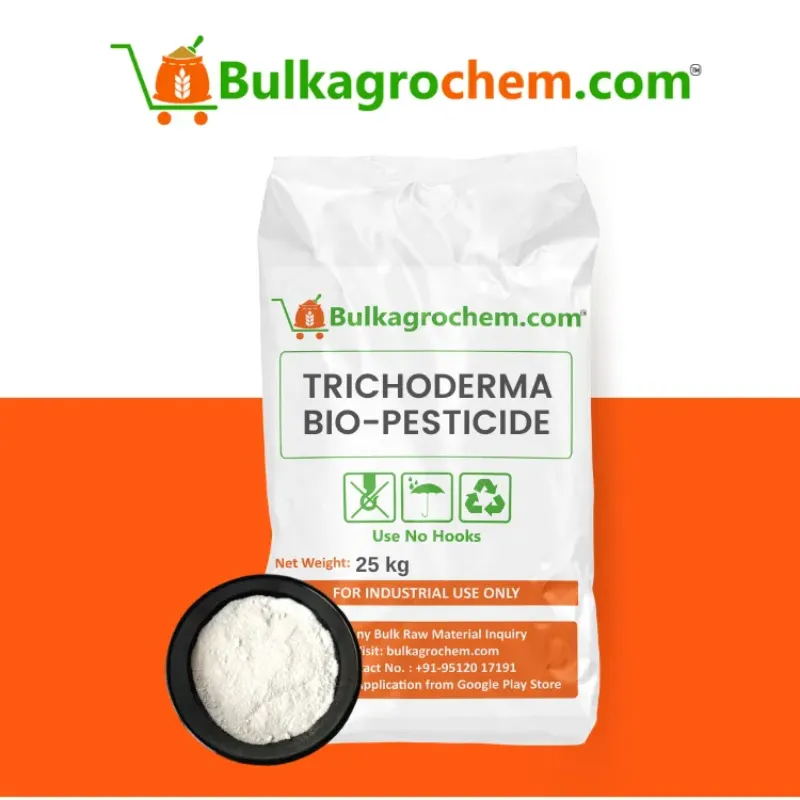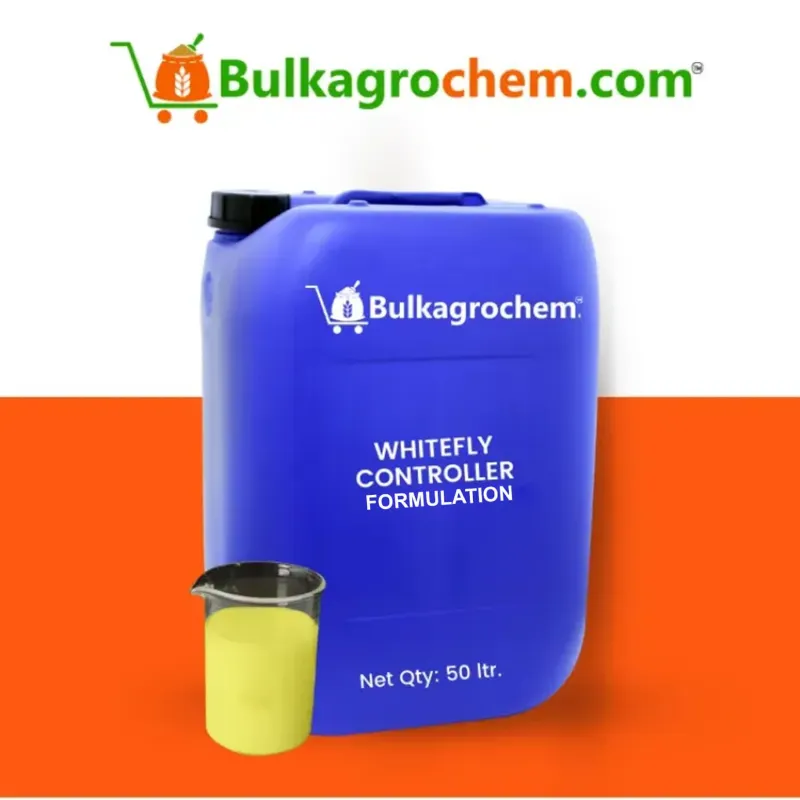Plant Growth Promoters--better known by the inquiry "What is PGR?"--are like gentle trainers that guide crops to grow stronger, faster and healthier.
These plant growth regulators optimize the plants own hormones to take care of everything from root development to fruit size without adding additional size/additional mass like traditional fertilizers.
Consider a PGR fertilizer to be a two-step product: food nutrients plus exactly measured growth regulators that enhance cell division, enhance stress tolerance, and promote sturdy stems that withstand wind and rain.
The expanding collection of plant growth regulators includes auxins for rooting, gibberellins for elongation, cytokinins for green leaves, ethylene inhibitors for longer shelf life, and so on--each is a purposeful tool in the modern farmer's toolbox.
Whether wheat fields or tomato greenhouses, these intelligent solutions assist farmers and growers harvest more with less, furthering the goal of a more sustainable, productive agriculture.
Introduction: What is PGR? Definition and Role in Agriculture
Plant Growth Regulators—frequently requested as “What is PGR?”—are natural or synthetic signals that send messages to a crop’s own hormones.
PGRs don't add bulk nutrients, they adjust rooting, shooting, flowering, and ripening so that every input is more effective and productive.
PGR Meaning and the Science of Plant Growth Regulation
A few molecules can switch genes on in seconds, changing everything from stem length and fruit size.
Since they act inside the hormone nexus, plant growth regulators offer growers the precision control that fertilizer can't.
Why Growers Pair PGR Fertilizer with Conventional Nutrients
- A blended PGR fertilizer acts to feed the plant and guide its growth in a sleight of hand.
- Nitrogen promotes leaf growth; meanwhile, a low dosage of gibberellin maintains the length of a stem, reducing lodging losses.
- The blended product means less spraying, less runoff, and no-haggle premium prices—a clear indication that nutrients and growth regulators combined make for a more powerful combination.
Plant Growth Regulators: How Growth Regulators Work Inside the Plant
Talk to an agronomist: What is PGR? and you will learn that these plant growth regulators are minute signals - natural or synthetic - that plug into a plant's hormone signaling network to drive growth more precisely.
When grown together with a balanced pgr fertilizer products can convert each gram of nutrients into faster root growth, strong stems and uniform ripening.
Natural Hormones vs. Synthetic Plant Growth Regulators
Natural hormones manage routine tasks; synthetics are utilized when farmers want precise control—compact wheat that resists lodging, or tomatoes that have the ability to travel further without spoilage.
Signal Pathways—Cell Division, Elongation, Gene Activation
A micro-dose of auxin could drive root cells into hyper speed, while gibberellin flips the switch for stem elongation!
Downstream, the messenger RNAs turn on specific genes, and suddenly, a few molecules of growth regulators turn into centimeters of new tissue overnight.
Conditions That Influence Regulator Performance (pH, Temperature, Crop Stage)
Even if the signals are wonderful, they won't matter if the sap is too acidic, the night is too cold, or the plant is past its most active stage.
Using the Right pH (ideally 5.5-6.5 for most sprays), warm but not burning atmosphere, and timing usually in the early-to-mid vegetative window will allow plant growth regulators to operate like magic—cost-saving inputs, and increased yield.
Benefits of Using PGRs in Crop Production
What is PGR? — micro-dosed signals that help crops metabolize light, stored water, and nutrients with surgical efficiency.
Increased Yield, Uniformity & Market Quality
- Whether used alone or as a PGR fertilizer, plant growth regulators turn ordinary inputs into high-value harvests.
- Auxins and gibberellins enhance the number of grains, berries, or pods per plant by speeding up cell division.
Enhanced Stress Tolerance & Plant Vigor
Synchronized flowering from timely growth regulators consolidates the harvest period, as well as the labor and storage losses.
Abscisic-acid analogues close stomata early to preserve water during dry conditions. Cytokinins maintain greener leaves under heat stress to preserve photosynthesis. Ethylene inhibitors slow senescence after storms or hail to keep canopies productive.
Economic & Sustainability Advantages
- Generate greater ROI: more tonnes per hectare reduces the ultimate cost per kilo sold.
- Increase efficiency of inputs: deeper roots (via auxins) use water from sub-soils which lasts longer between irrigation.
- Reduce ecological costs: compact canopies penetrate sprays better, requiring fewer pesticide passes, and emit less carbon footprint.
If we couple accurate plant growth regulators with plant growth, farmers are harvesting more than before, on the same area of land, wasting less, and getting closer to being sustainable.
PGR Fertilizer Application Techniques for Optimal Results
Just a quick refresher: What are PGR?—they're another word for plant growth regulators or what gets the crop to change hormones.
The correct PGR fertiliser applies/irrigates PGR's with the nutrients - giving farmers a one-pass solution.
Foliar Sprays, Soil Drenches and Seed Treatments
- Foliar sprays: applied to the leaves and are quickly taken up, great for a late-season boost of size or colour.
- Soil drenches: as they locate ahead of the physiological restrictions of the product when applied to the soil, for example anti lodging products from the list of plant growth regulators are paclobutrazol.
- Seed treatments: stimulate germination. For example, a micro-coated seed of gibberellin or cytokinin will allow for uniform stands pre-emergence.
Timing and Dosage Benchmarks for Key Crops
A rule of thumb: spray in the cool part of the day and stay within label ranges to avoid hormone shock.
Integrating PGR Fertilizer into Fertigation or Tank Mixes
- Watch for pH—most plant growth regulators remain effective in the pH range of 5.5 – 6.5; use a pH buffer if needed.
- Add the PGR last in the tank; as gentle agitation assists in avoiding molecule breakdown.
- PGRs can be banded in drip lines with low-salt fertilizers; high electrical conductivity (EC) may reduce plant uptake.
- Always Jar-test: even plant-friendly nutrients may deactivate sensitive plant growth regulators.
By adjusting a few operation protocols, PGR fertilizer can be integrated into standard spray or fertigation runs, effectively turning crops from nutrition with intention into science-based guided growth.
Comprehensive List of Plant Growth Regulators and Their Specific Functions
Plant scientists addressing the question what is pgr?, cite this list as the core plant growth regulators, with each providing a different method for steering crops. Available on their own or within a PGR fertilizer base, plant growth regulators precisely steer roots, shoots, and fruits.
Auxins – Rooting, Fruit Set, Tropism Control
A micro-dose of auxin stimulates a transit layer of roots, supports a bloom fruit set and is why auxins are at the head of the hierarchy of plant growth regulators for orchards and nurseries.
Gibberellins – Stem Elongation, Seed Germination
GA sprays elongate cereal internodes and increases biomass, and throwing the same hormones on barley as a seed treatment wakes up the dormant barley, which keeps gibberellins very much in the conversation for any growth-regulator program.
Cytokinins – Cell Division, Delayed Senescence
An application of cytokinin foliar as a quick dose brings fresh cells to life while decreasing the rate of leaf senescence, providing plant canopies with an opportunity to photosynthesis longer that turns excess sunlight into yield.
Ethylene Inhibitors/Modulators – Ripening, Lodging Management
1-MCP, the softening signal blocker, gets apples crisp all the way across oceans, while paclobutrazol, the growth regulator, stunts wheat height, reduces lodging, and provides a protective barrier on grain quality.
Abscisic-Acid Analogues & Next-Gen Molecules – Drought Response, Dormancy
S-ABA, the stomatal closer, has a role in dry skies, while the new peptide based growth regulators induce stress genes and do not leave a residue, and gives farmers a better toolkit for climate-smart farming.
Safety and Environmental Considerations When Using Growth Regulators
PPE, Handling and Residue Regulations
Knowing what is PGR? is only half the story—responsible use of these plant growth regulators protects people, crops and ecosystems.
To summarize: wear personal protective equipment, mix in a well ventilated space, and never exceed the label residue limits of your plant growth regulator of choice (from the list of labelled PGR's).
Environmental Fate, Drift Control and Non-Target Safety
- Use a spray pH range of 5.5 - 6.5; extreme pH will break down many growth regulators before they have time to work.
- Use low-drift nozzles and turn off nozzles that are adjacent to any waterways to protect bees, fish, soil microbes, etc.
Reading Labels and Staying Compliant with Local Laws
Labels include the rate of application, buffer zones and unusable tank partners. Ensure that you are always adhering to the maximum regional application rates, as a fine for exceeding any limit will likely surpass any cropped yield.
Future Trends and Innovations in Plant Growth Regulators
New technologies are revolutionizing the manner in which plant growth regulators are applied and affect their target cells.
Nano-Formulated Growth Regulators for Targeted Delivery
Nano-encapsulation preserves active molecules from UV and releases them in the targeted site, so grams can perform like litres of other products.
Microbial PGRs and Biostimulant Hybrids
Recent developments of beneficial bacteria that produce auxins and gibberellins in the rhizosphere fundamentally alter how growers might elect to use a bio-based option that results in no adverse chemical residue.
AI-Driven Precision Spraying and Decision Tools
Sensor technologies in the field that work in conjunction with artificial intelligence enable predictions based on crop stage to tell operators the exact moment in time that a growth regulator will have its maximum effect. This means no more guesswork, and less waste.
Farmers that invest time in mastering new technologies will have a bright future. In doing so, they will continue to experience the benefits of PGR fertilizer while increasingly higher safety, and sustainability regulations.
Frequently Asked Questions
Q1. What is the difference between a PGR and a regular fertilizer?
Conventional fertilizer provides a nutrient source (N-P-K) while plant growth regulators (PGRs) are signal molecules that determine the use of that nutrient. A mixed product PGR fertilizer delivers both at once.
Q2. Are plant growth promoters safe for food crops?
Yes—registered plant growth regulators have undergone food safety assessments. If applied at label rates, residues of any of the products found on the list of plant growth regulators are below legal levels.
Q3. How often should a growth regulator be applied in one season?
Most crops only need one or two well-timed applications; excess use may be counterproductive, so applications should adjust dosage and timing specific to the crop stage listed on the label.
Q4. Can PGRs be used in certified organic farming?
There are also bio-based PGRs, such as extracts of seaweed and sprays containing microbial cytokinins, that can be used according to organic standards but, as always, confirm with your certifier.
Q5. Will plant growth regulators harm pollinators or beneficial insects?
When modern PGRs are applied at dawn or dusk using low drift nozzles, they have little toxicity to beneficial insects (bees and predators). PGRs do this by using internal plant pathways, not phytotoxic pathways, hence little target residue.
Q6. Do growth regulators work on all crops or only specific ones?
Hormonally, broad-spectrum-like gibberellin assist many species individually but, some PGRs will also be crop-specific; therefore, check the list of plant growth regulators on the label to help you match the molecule to the correct crop.
Conclusion: Embrace Plant Growth Promoters for Sustainable Crop Success
Plant Growth Promoters—most commonly answered by the question "What is PGR?"—are optimally situated for greater production, reduced inputs, and sustainable agriculture.
When that primary molecule of the plant growth regulators list is paired with a balance PGR fertilizer, producers take conventional nutrition and convert it to targeted execution performance, demonstrating the modern growth regulators are the nexus of well-run, climate-smart profitability.
Recap of Key Benefits, Safety Practices and Future Potential
Plant scientists tackling the PGR question uniformly confirm precise application of plant growth regulators tailored to the crop, can impact and convert every water drop and gram of nutrient into consistent, higher, and more efficient aggregate yields.
Nik Neal says we can achieve this with PGR delivered as a balanced fertilizer, maintaining label-recommended residues, improved stress tolerance and lodging reduction as well as enhancing marketable quality.
Using proper personal protective equipment, drift-reducing nozzle, and label-directed timing, we can ensure PGR have the intended benefit while helping protect our people, pollinators, and soil.
Using nano-based formulations, microbial PGR, even AI driven sprays will improve the grower's ability to apply with greater precision and less input requiring a very specific use history in moving sustainable farming to another level.
Next Steps for Farmers to Integrate PGRs Effectively and Responsibly
- Evaluate your goals: align crop issues (e.g., lodging, fruit size, drought) against the appropriate molecule(s) noted on a list of plant growth regulators.
- Start simple: experiment with a split field trial with label-rate PGR fertilizer, summarize yield, uniformity, and ROI.
- Calibrate and time: make sure to apply at the growth stage called out on the label; application of a plant growth regulator at the wrong time, just once, can eliminate previous gains.
- Stay compliant: ensure that you adhere to residue limits, buffer zones, and re-entry intervals; protecting safety protects market access, and ecosystem health.
- Plan ahead: as your market is ready, consider bio-based or nano plant growth regulator applications. Future ready farms innovate faster.
Grower sustainability lies in combining stewardship and cutting-edge plant growth regulators so that growers can achieve sustainable and profitable harvest year after year.






